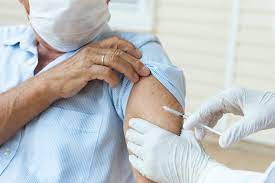Evolution of the Vaccine
- Mahi Mahitcha

- Jul 24, 2022
- 2 min read
Updated: Jul 25, 2022
The practice of immunization has been around for hundreds of years. Thought to have originated in ancient China or India, the advancement of this practice all began with inoculation - the process of deliberately infecting a person with a strain of a disease to create a milder form of it.
The father of Western vaccinology is thought to be Edward Jenner, a doctor who, like others of his time, performed a process called variolation to protect patients from smallpox.
Variolation was a type of inoculation, one of the first methods used to control smallpox. Named after the virus that causes smallpox - the variola virus - variolation exposing people who never had smallpox to the disease. This was done by introducing them to material from smallpox sores, inhaling or scratching it into a person’s arm. After this, they would typically develop mild smallpox symptoms, like a fever or rash, but fewer people died from it than from acquiring the disease naturally.
Jenner’s breakthrough came in 1796, when he became fascinated by stories that said people who caught a less common disease (cowpox) from their cows would not catch smallpox. Curious, he tested the validity of this by inoculating a young boy with cowpox, and subsequently smallpox. The boy showed symptoms of cowpox, but did not develop smallpox after.
After testing this several times, Jenner concluded that the child had become immune to smallpox.

Jenner’s contributions to the world of medicine led to smallpox, one of the most feared diseases in the world, being eradicated in 1980, when it was formally declared by the World Health Organization.
Today, vaccines are a routine part of people’s lives. Healthcare professionals administer them regularly, and people are given multiple vaccines even in the first year of their lives to protect them from diseases.
Vaccines are mass-manufactured using several different processes. All vaccines contain an active “ingredient,” the antigen, that causes an immune response, or the blueprint to make one. They can contain weakened live viruses, inactivated organisms/viruses, or even small segments of the pathogen. Common vaccines are those against measles, mumps, and rubella (combined as the MMR vaccine), chickenpox/varicella, and the flu. They are typically administered through the intranasal, subcutaneous, or intramuscular routes - through the nose, fatty tissue, or muscle.
So, what lies in the future for vaccinolog? Molecular genetics is set to play a significant role in the development of new and more effective systems to counter conditions like tuberculosis. Soon, therapeutic vaccines may even be available for allergies, addictions, and autoimmune diseases.


Comments